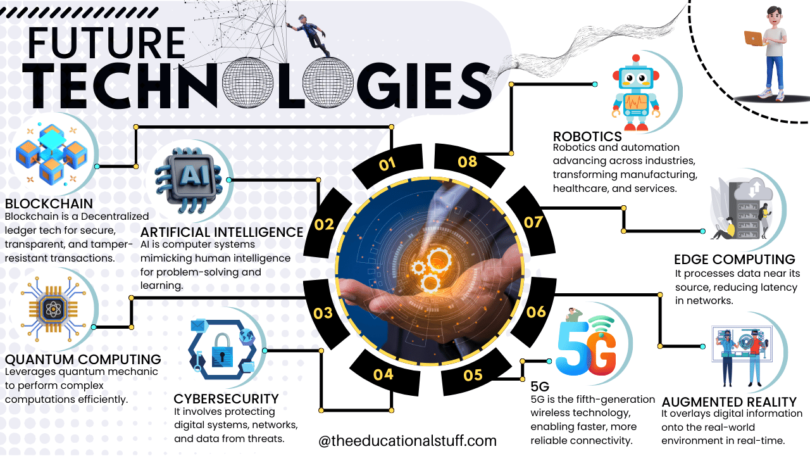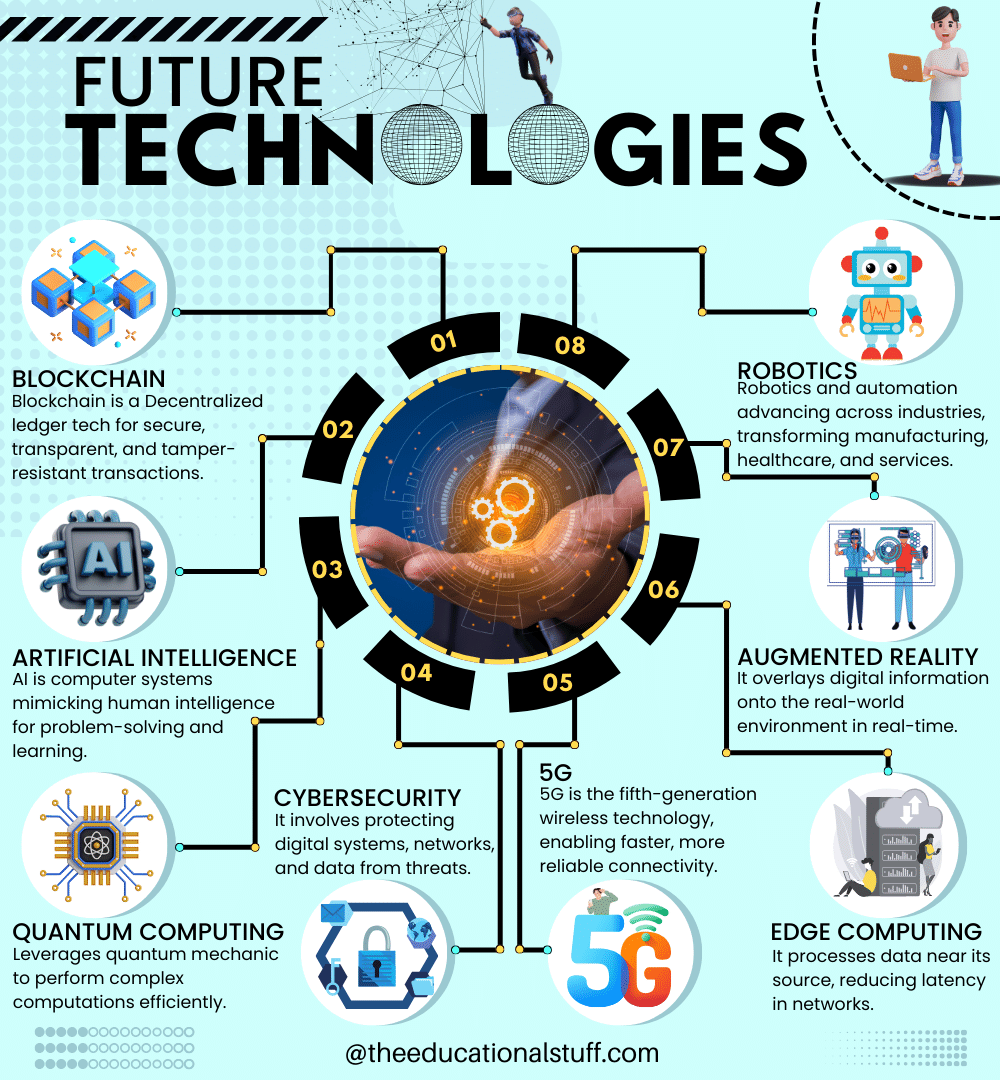In 2024, Technological Innovations in IT are changing how we use computers and the internet. These new changes make things faster and smarter, helping us all do our work better.
The digital age is rapidly evolving, and with it comes a suite of transformative technologies poised to redefine our everyday lives. Let’s dive into these groundbreaking advancements and their potential impacts.
The Unseen Chains of Blockchain
Imagine a world where every transaction you make is secure, transparent, and immutable. That’s the promise of blockchain. Originally the backbone of cryptocurrencies, this decentralized ledger technology is branching out into sectors like healthcare for patient data management, finance for fraud reduction, and even in supply chains for ensuring authenticity.
Key Points:
- Decentralized and secure transactions
- Transparency in operations
- Wide-ranging applications beyond cryptocurrency
The Brain Behind the Machines: Artificial Intelligence
Artificial Intelligence (AI) is reshaping the fabric of how tasks are performed. AI algorithms learn from data, they adapt, and they make decisions, emulating human-like intelligence but at a scale and speed unmatchable by us. From chatbots in customer service to predictive analytics in business, AI is not just about automation; it’s about smarter, more informed decision-making.
Key Points:
- Mimicking human intelligence
- Enhancing problem-solving capabilities
- Learning and adapting from data
The Digital Shield: Cybersecurity
With great digital power comes great responsibility—specifically, the responsibility to protect. Cybersecurity is the armor in the digital battleground, safeguarding data, networks, and systems from malicious attacks. As threats evolve, so do the defenses, with cybersecurity measures constantly advancing to outsmart potential breaches.
Key Points:
- Protection against digital threats
- Ensuring data privacy and integrity
- Continuous evolution of defenses
The Speed of Tomorrow: 5G
5G is not just an upgrade, it’s a new frontier in connectivity. With its ultra-fast speeds and lower latency, 5G will enable a more interconnected world. From streaming high-definition media on the go to enabling remote surgeries performed via robotic arms, 5G’s impact will be profound and pervasive.
Key Points:
- Enhanced mobile broadband experience
- Enabler for Internet of Things (IoT) devices
- Foundation for innovative applications
Quantum Leap in Computing
Quantum computing is the supercharged engine of the future, performing calculations at a pace that dwarfs the best of today’s traditional computers. It holds the potential to unlock mysteries in quantum physics, create unbreakable encryption, and solve complex medical problems in moments.
Key Points:
- Handling complex calculations with speed
- Potential for breakthroughs in various scientific fields
- Advancing encryption and security
The Dexterity of Robotics
Robotics is stepping out of the assembly line and into our daily lives. Whether it’s manufacturing, healthcare, or customer service, robots are becoming more advanced and capable of performing tasks with precision and efficiency, transforming the way industries operate and how services are delivered.
Key Points:
- Automation of repetitive tasks
- Enhancement of precision and efficiency
- Transformation across various industries
Reality, Augmented
Augmented Reality (AR) overlays digital information onto the physical world, creating a hybrid reality where virtual and real-world elements coexist. This technology is not just changing the gaming industry; it’s revolutionizing how we learn, shop, and even conduct remote work.
Key Points:
- Merging digital and physical worlds
- Applications in education, retail, and beyond
- Real-time interaction and information
The Edge of Data Processing
Edge computing is about proximity, processing data where it’s collected. By minimizing the distance information must travel, edge computing reduces latency and conserves bandwidth, enabling real-time processing and decision-making for technologies like autonomous vehicles and smart city infrastructures.
Key Points:
- Processing data closer to its source
- Real-time data analysis capabilities
- Enhancing the performance of IoT devices
Each of these technologies carries the promise of not only advancing our capabilities but also raising important questions about their integration into society. They challenge us to rethink our approach to privacy, security, and the human experience in the tech-driven world. As we continue to unravel the potential of these innovations, we step closer to a future where the limits of technology are bound only by our imagination.








Leave a Comment